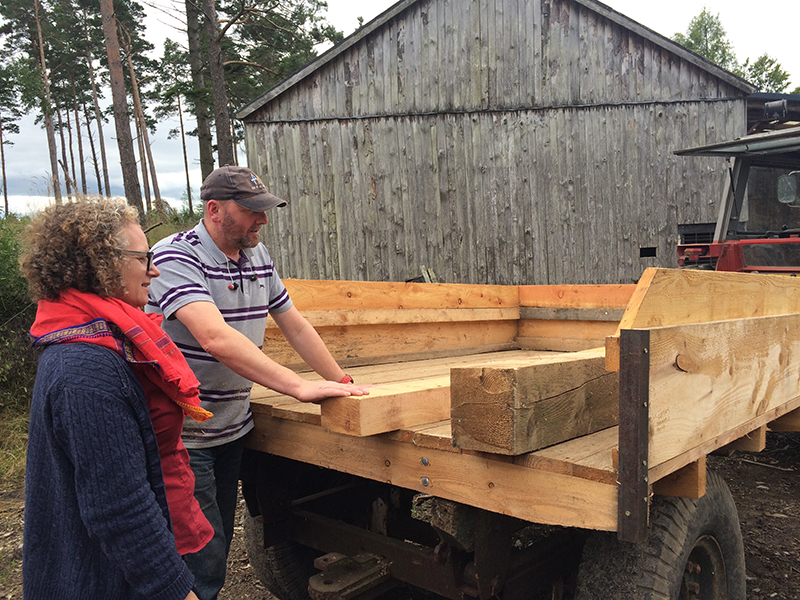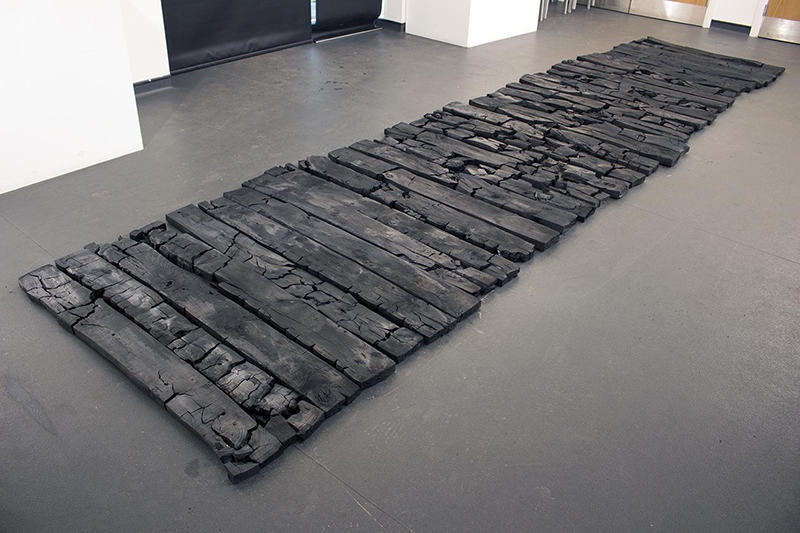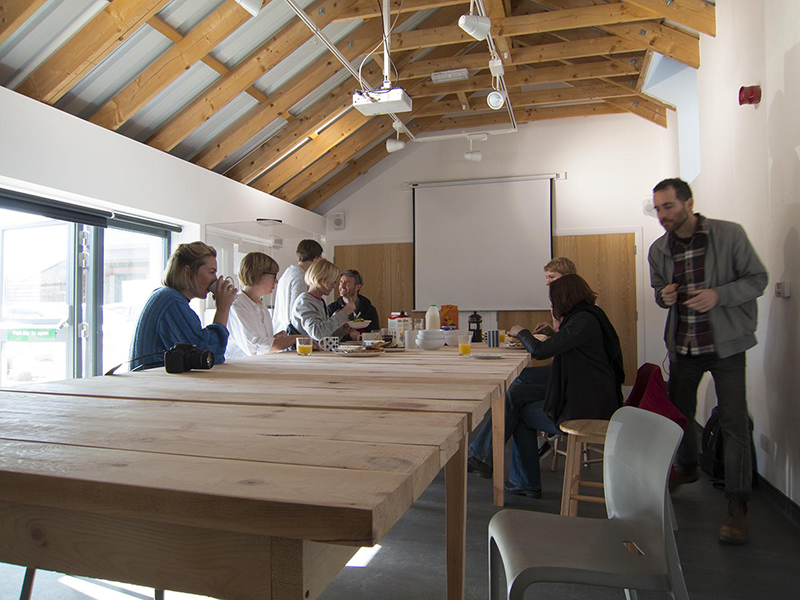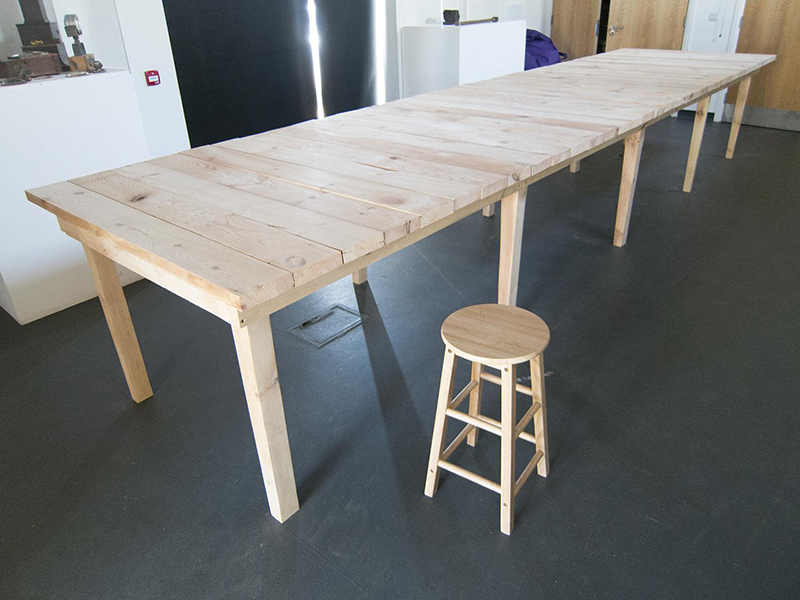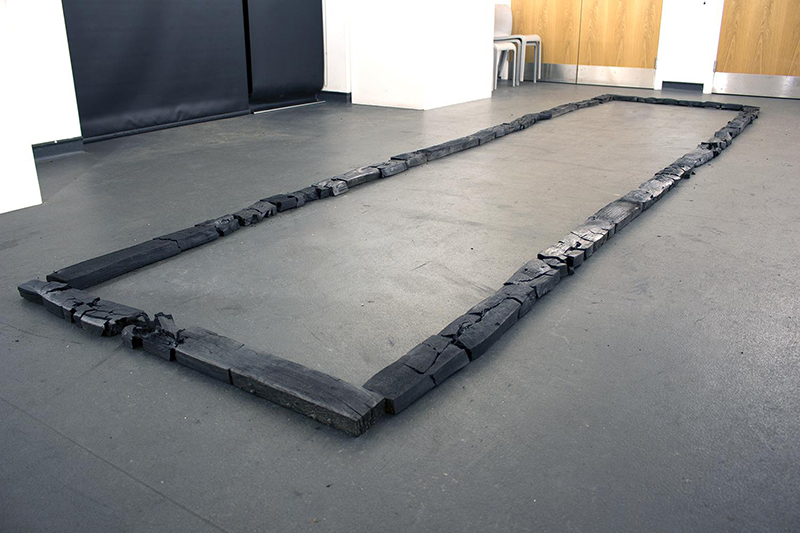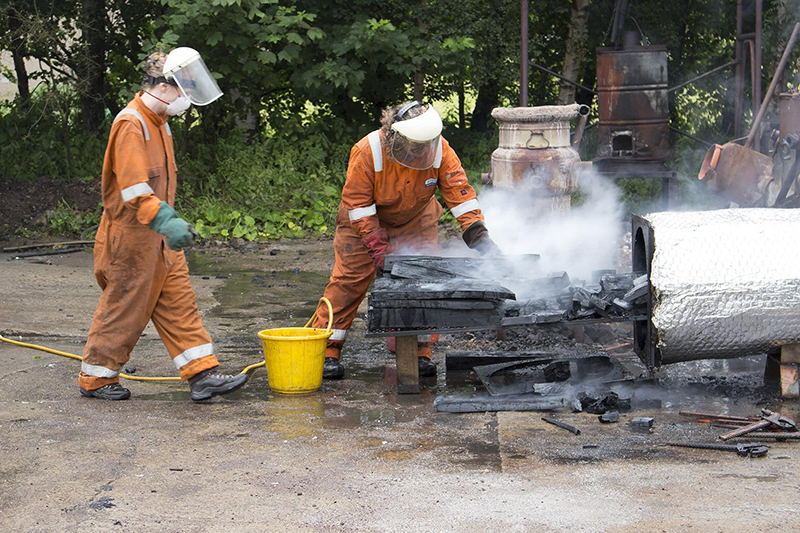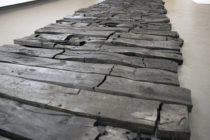Caledonia (Carbon Pine), 2016
Scottish Sculpture Workshop, Lumsden, Scotland
The Earth harbors a finite amount of carbon that though going essentially unchanged, shifts function and locale within the larger carbon cycle whether very slowly or rapidly. Photosynthesis removes inorganic carbon from the atmosphere where it is incorporated into the tissue of the forest as once again organic. Carbon returns to the atmosphere through consumption and subsequent respiration, decay and/or combustion. Human manipulation of the broader ecosystem and landscape has led to an increased volume of atmospheric carbon and a decrease in sequestered carbon, resulting in anthropogenic climate destabilization.
Caledonia begins with an old growth Scots Pine harvested from the Scottish Highlands; a region whose ecosystem has been highly altered by humans since the ancient temperate “Caledonian” rainforests’ broadest extent (5000 BCE). Affected first through agriculture, further reduced as charcoal for iron smelting operations of the industrial revolution, controlled through forest management favoring the timber industry and manicured by way of fire for the sport hunting of grouse, the biomass of the rainforest remains one percent its original breadth. It is precisely these forms of land use (agriculture, deforestation and extraction) that have influenced the increase in atmospheric carbon.
From the tree is culled the board; and from the board we construct the table. The form of the table, a simple article of craft, reflects the scale of human bodies and lifespans. The old growth pine, the sole direct descendent of the ancient Caledonian forest, is then charcoalized, rendering a likely carbon source (wood) into a carbon sink (charcoal) and stretching human time scales into geologic time scales. The table stands in potentia: while the organic carbon is made static, locked into the boards for what could be thousands of years, the wood has also become fuel, poised to ignite.
